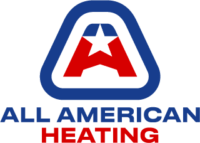The Home Checklist to Complete when Your Clocks Fall Back

Check into Fall habits.
When the leaves start turning from golden to brown, the Jack-o-Lanterns are lit, and the snow begins to fall, it’s also time to change our clocks and end Daylight Savings Time and Fall back.
Time changes – which occur in both Spring and Fall – make great indicators that it’s time to complete home maintenance tasks for winter prep. Taking care to do these things will help keep your home and its mechanical systems in peak operating condition. And that saves you time, energy, money, and worry.
Here is our complete checklist of all the things that you’ll want to accomplish in your home this Fall as we change to Standard Time.
- Have your heating system – whether it’s forced-air furnace or a hydronic/boiler system – cleaned and inspected by a mechanical services or HVAC professional.
The sooner you schedule your maintenance cleaning and inspection, the better – companies like us are heading into the busy season, and we want to ensure that everything in your home is working properly to keep you and your family comfortable and safe as the snow starts to fly.

- Check your fireplace for damage and have the flue professionally cleaned and inspected.

- Inspect your windows – indoors and outdoors – to make sure there are no cracks or gaps between the frame and the house.
Fill in any openings with weather stripping or caulk, or consider replacement windows. It’s very important that your home’s exterior envelope be sealed before winter arrives. This will help keep your warm air in and cold air out. In addition, this will allow your system to work less, and achieve the energy efficiency it was meant for.
- The same is true with exterior doors. Check to make sure there are no gaps or leaks that will allow heated air to escape.
These openings can be filled with weather stripping, foam, or sealant that can be purchased at any big box home store or hardware store. This is also a great opportunity to fix squeaky hinges or loose handles and locks.


- Have your home’s ductwork cleaned, sanitized, and sealed.
Cleaning and sealing your home’s duct system will help improve your heating system’s efficiency and let air flow more evenly through your home, increasing comfort and reducing energy costs. There is no point in having an energy-efficient furnace if your delivery system is damaged, leaking out warm air, and taking in dirty air.
- Change your furnace filter. This also makes it easier for your system to provide clean, conditioned air to you and your family without using as much energy.
- Make sure your home’s exterior is in good condition. Touch up siding and trim with paint, and make sure the roof has no damaged, missing, or loose shingles.
- Clean your gutters! Make sure your gutters either have gutter guards or are otherwise free from leaves and other debris.
Gutters that are full of garbage can cause water back-ups that may cause damage to your home. When the water in clogged gutters freezes, this can form ice dams on your roof. Ice dams can not only cause water damage upon melting, but the excessive weight can pull off your gutters altogether, cause water damage, or even collapse areas of your roof.


- Mend cracks and gaps in your blacktop or concrete driveway or walkways.
This helps to remove tripping hazards and also prevents water from getting under the concrete and freezing, which can lift slabs or cause cracks to expand and worsen.
- Change or clean out your dryer vent. Dirty dryer vents full of lint buildup are one of the leading causes of house fires.
It’s a good idea to have these vacuumed out or to change the vent altogether whenever you change the time. Be sure to clean the back of the dryer, the lint trap, and the point of attachment, too.

- Replace the batteries in your smoke and carbon monoxide detectors. Make sure there is a smoke detector on every floor of your home, including in the basement – and test them regularly.
- Check all of your home’s electrical – both the outlets and wiring in your home, as well as anything that plugs in. Make sure there are no frayed or broken cords or wires and replace anything that looks questionable.

- Drain and store your exterior hoses and in-ground sprinklers. Drain your outdoor spigots and wrap them in insulation
Also, wrap any external pipes that are exposed to the elements or are in unheated garages or outbuildings.
- Turn off outside water valves to prevent freezing and damage.
- Drain your water tank to remove any buildup of corrosion or mildew. Check it for leaks before you turn it back on.
Completing the items on this checklist will help ensure that you and your family are safe and comfortable this winter. Call All American Heating at 970-453-6640 to schedule your heating system maintenance today.
